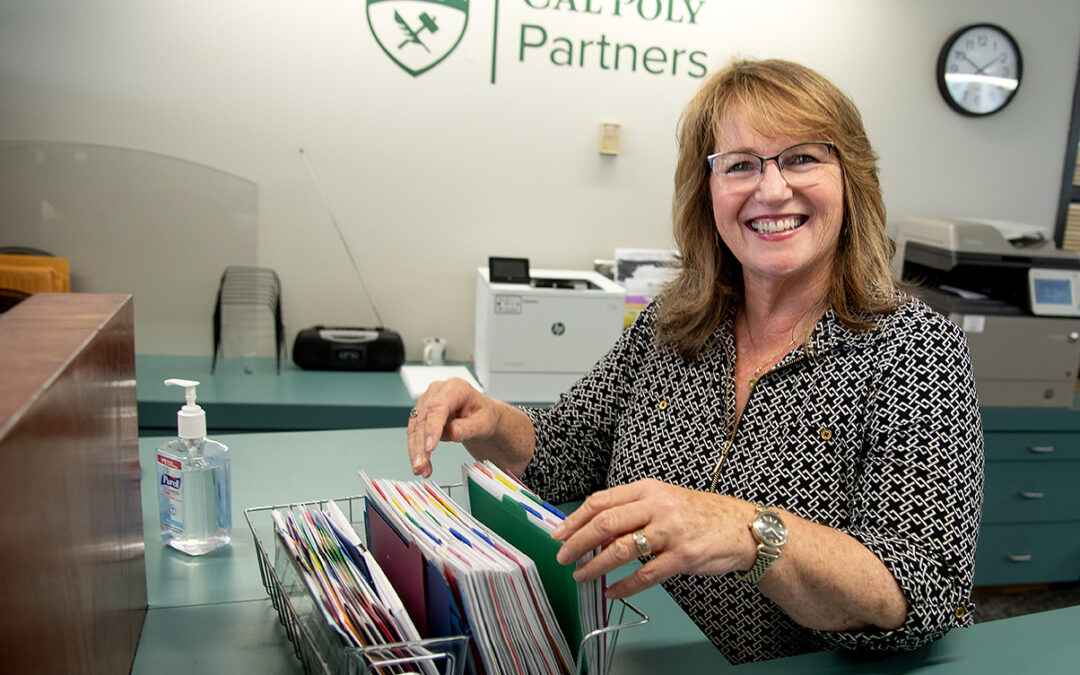SAN LUIS OBISPO, CA — Campus Dining holds sustainability as an integral part of its operations. Going beyond traditional recycling, Campus Dining is committed to a comprehensive recycling program including composting food scraps, recycling cooking oil, using biofuel in campus vehicles, and donating uneaten food to local food banks. 19 Metro Station has also started the awareness campaign “Clean Plate. Clean Planet” to keep students mindful of their uneaten food. Every year 193,000 pounds of cardboard and 400 large bins of aluminum, plastic, and glass are recycled. In the 2010-11 fiscal year alone, 128 tons of food scraps were converted to compost.
For more information on Campus Dining’s sustainability programs visit Campus Dining Sustainability
What is currently composted on campus (if any food), and how much food waste is sent to the Engel and Gray bin?
We have special compost bin in every unit/venue on campus, 2013/14 we diverted 249 tons of food waste from the landfill. We collect all pre-consumer food waste and we collect post-consumer in our cafeteria as all dishes are run through our dishroom and leftovers on the plates are scraped in to collection bins.
How much does it cost for Engel and Gray to pick it up? Would the cost increase if the volume of food were to increase, and if so how much?
Cost is by the ton, currently that is $65, so the answer to the second part of the question is yes, if volume goes up cost goes up.
How many staff collect the trash bins? About how many bins can each person handle?
There is really not a specific number of staff. We have 5 full time custodians and part of their duty is collecting the yellow compost bins and taking them out to the Engle and Grey container. I am not sure what you mean by the second part of the question. Do you mean by weight, by time. The bins have wheels and the trucks have special automated lifts. Collection time is not an issue.
How would staffing need to change if compostable material bins were introduced across campus? Would it be more effective to begin placing these bins in stages (i.e. begin with bins in and around dining facilities, then across the wider campus, then eventually even bins located in classrooms)?
We already have staff to collect all compost bins in dining venues, the state oversees and collects the bins out in academic buildings and public areas so they may have a change.
I would suggest not much more staffing even for them as they have staff to collect all bins now, if you add composting you would be reducing “trash” bin volume. As an example in dining areas we have 3 cans(placed as a group) number of groups changes based on the size of the operation. But our custodians are picking up 3 cans no matter what(trash, recycling and food scrap)
How does existing compostable material get collected from dining facilities and delivered to the bin that is sent to Engel and Gray?
Every operation has yellow compost bins to place food scrap, custodians pick those bins up once a night from small venues, 3-4 times a day from large venues, they have a special truck with a hoist on it that they load up and drive out to the Engle and Grey container.
Are the liners for trash bins different for compostable materials than other trash? How much do they cost?
Yes, the liners for the compost bins are a thin compostable plastic that Engle and Grey approved(I believe either corn or potato based). Prices over the last 5 years have really dropped, 5 years ago any compostable product was at minimum twice the cost of traditional versions but today they are very close.
Cost is .13 cents
It has been proposed that all trash and recycling bins across campus will be standardized to be replaced. Do you know of any requirements or costs for replacing these bins? What requirements are there for bins located inside of the dining facilities?
Yes, the university as a whole is looking at trying to standardize the collection bins around campus. The cost depends on the bin itself(plastic, concrete, etc). Bins can run $300 to $1600, for inside spaces we have been looking at some great trio bins(compost, trash, recycle) that are $500 for all three, higher for larger versions. The only requirement for dining bins is we look at form and function, so we are looking at bins that are attractive but are very easy to understand and by design tell the story of landfill diversion.
Is there any food waste that cannot be composted/sent to Engel and Gray? Can compostable dishes, etc. be eventually integrated with this output material?
No, all organic food scrap can go in the bin.
The processing center has a lot to do with what can go in the bins. But the answer would be yes, eventually if you place compost bins out and people know what plates, cups, etc can go n them and the plant has the equipment to grind the plates up, it is possible.


